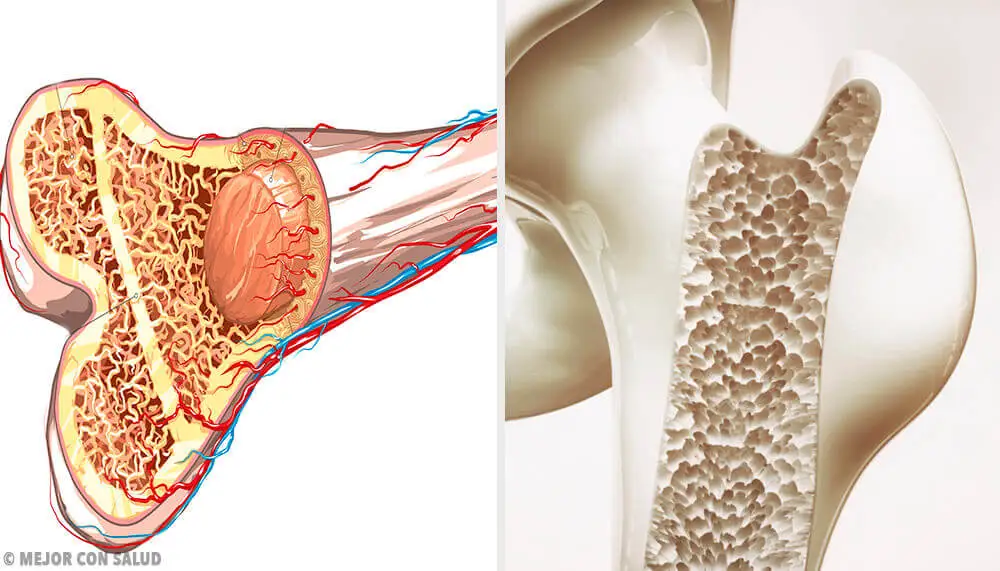Ewing's Sarcoma: Symptoms and Treatments of This Rare Form of Cancer


Reviewed and approved by the nurse Leidy Mora Molina
In Ewing’s sarcoma, bone tumors form, manifesting as lumps, swelling, bone weakness, stiffness, weight loss, fatigue, and even spontaneous fractures.
The exact causes are not yet known, although associated risk factors, such as age or ethnicity, have been identified. Treatments include radiotherapy and chemotherapy, among others.
The survival rate of this type of cancer is between 60% and 70%.
What is Ewing’s sarcoma?
Ewing’s sarcoma is a rare type of cancer that attacks the bones or surrounding soft tissues, forming tumors. These can spread to other areas, metastasizing.
It’s not common in adults. In general, those affected tend to be children and adolescents, mostly boys. This is especially the case during puberty, when the bones are in full growth. Its incidence is estimated at 2.73 cases per million people.
Although they may have similar manifestations, there are differences between osteosarcoma and Ewing’s sarcoma. In terms of frequency, the former is more common. In origin, they originate from different cells.
Like this article? You may also like to read: Testicular Cancer: The Disease that Borussia Dortmund’s Sebastien Haller Has
Signs and symptoms
Ewing’s sarcoma is more frequent in the bones of the lower limbs, particularly the femur, as well as in the pelvis. However, it can occur in other sites, as well.
Signs and symptoms include the following:
- Bone pain: This may be intermittent and less intense at night.
- Swelling: This is often accompanied by lumpy sensation, which may feel soft to the touch.
- Tenderness in the affected area.
- Stiffness in the nearby joint.
- Weakness or numbness in the limbs.
- Spontaneous fractures.
- Bone tumors
Several of these signs may be due to other conditions. However, it’s important to see a doctor if you experience them. There are also cases of people with Ewing’s sarcoma who have no symptoms.

Causes and risk factors
The exact causes of Ewing’s sarcoma have not been determined. It’s known that this disease begins when cells undergo changes in their DNA, causing them to multiply uncontrollably.
These changes most often affect a gene known as EWSR1. This results in a tumor mass of cells that can spread, metastasizing to other bones.
On the other hand, it’s known that this disease isn’t hereditary. As for the risk factors for Ewing’s sarcoma, there are the following:
- Age: Although it can occur at any age, most cases are in people between 10 and 20 years old.
- Sex: It’s more common in males.
- Ethnicity: It’s not as common among people of black or Asian ethnicity compared to those of European descent.
We think you may also enjoy reading this article: Experimental Colorectal Cancer Drug Achieves Remission in all Study Patients
How is the diagnosis?
The diagnosis of Ewing’s sarcoma begins with a physical examination. The patient or parents are also questioned regarding symptoms, frequency, and duration of symptoms. From this, different tests may be recommended.
Imaging tests
Imaging tests begin with x-rays, which can detect obvious tumor masses. CT scans are also performed, especially in the chest area, to see if there’s any spread to the lungs.
MRI scans can also be used for this purpose. Finally, positron emission tomography and bone scintigraphy are performed.
Biopsies
A needle biopsy is performed. A needle is inserted through the skin into the tumor to extract a sample. The samples are sent to the laboratory.
Alternatively, a surgical biopsy can be done after surgery to remove the tumor. However, there’s also the option of removing only a portion of the tissue through a small incision.
Other tests
In addition to those mentioned above, various laboratory tests are performed:
- Completeblood count
- DNA testing to determine if there are genetic mutations
- Other tests like high lactate dehydrogenase (LDH) levels may be looked at
Treatment of Ewing’s sarcoma
Based on the progression of the disease, the patient’s condition, and age, the medical team will decide on the protocol to follow. The most common treatments used in Ewing sarcoma are described below.
Chemotherapy
The approach is usually initiated with chemotherapy. Powerful drugs are combined to kill the cancer cells.
The drugs can be administered orally or intravenously. Among the most common are cyclophosphamides, doxorubicin, vincristine, and dactinomycin.
When the tumor has not spread, chemotherapy is given every 2 weeks. Even if surgery is required, treatment with these drugs may continue after surgery.
Chemotherapy often has side effects, such as hair loss, loss of appetite, nausea, vomiting, fatigue, and increased risk of infection by developing neutropenia.

Surgery
In the case of surgery, the aim is to eliminate the cancerous cells in their entirety. The most complicated cases go as far as amputation of a limb.
In other cases, the tumor is removed without amputation. However, as part of the bone tissue is lost, the functioning of the limb is affected.
Grafts may be required, either from the patient’s own bone tissue or from a donor, as well as implants (metal or plastic prostheses).
Radiotherapy
Radiotherapy is also an option after surgery to destroy any remaining cancer cells. In general, it helps to reduce cancer growth and relieve symptoms, such as pain.
Side effects include fatigue, skin reactions, and stomach upset. In the long term, it can interfere with bone growth and even increase the risk of secondary cancer.
Other procedures
Besides those mentioned above, there are other procedures for the treatment of Ewing’s sarcoma. Among these is bone marrow transplantation, either allogeneic or autologous.
It can be done in combination with chemotherapy or radiotherapy. Its efficacy is still being studied.
Additional care
Even after treatment has been completed, patients with Ewing sarcoma should continue to be evaluated and monitored. In this regard, the following recommendations are made:
- X-rays should be done every six months for five years. Then, they should be done yearly for the rest of their lives.
- They will also have regular lung scans and periodic bone scans.
- Moreover, they must attend physical therapy after surgery to help regain mobility or learn to use a limb if there are implants.
- Emotional support services are also available to help in the case of limb loss.
Prognosis and complications
Occasionally, the body does not respond to treatment, and the sarcoma can’t be controlled, progressing to advanced or terminal disease. In any case, the procedures are usually successful in a high number of cases.
The figures vary. A 5-year survival rate of 75% is estimated for those under 15 years of age. This percentage decreases slightly with age, to 58% for adolescents. The same occurs when metastases are present.
There can be permanent remission or only temporary, causing the cancer to return. There’s more chance of recurrence during the first 2 years after treatment ends.
Late recurrences (up to 5 years later) are more common with Ewing sarcoma than with other types of cancer. When it recurs, it can be more difficult to treat, as the drugs that were used for chemotherapy can’t be prescribed again because of the risk of toxicity.
All cited sources were thoroughly reviewed by our team to ensure their quality, reliability, currency, and validity. The bibliography of this article was considered reliable and of academic or scientific accuracy.
- Hernández González E, Mosquera Betancourt G, Quintero Martínez O, Hernández Cabezas I. Sarcoma de Ewing. AMC. 2013; 17(5): 623-640.
- Jiménez Soto D. Sarcoma de Ewing en Pelvis. Revisión bibliográfica. San José: Universidad de Costa Rica, 2019.
- Khanna N, Pandey A, Bajpai J. Metastatic ewing’s sarcoma: Revisiting the “Evidence on the Fence”. Indian J Med Paediatr Oncol. 2017; 38: 173-181.
- Sánchez J. Lactato deshidrogenasa. Bol. Hosp. San Juan de Dios. 1999; 46(3): 182-187.
- Muñoz Villa A. Tumores óseos. Rabdomiosarcomas. Pediatr Integral 2016; XX (7): 458 – 464.
- Thowinson-Hernández M, Hernández-Martínez A. Neutropenia febril inducida por quimioterapia e infecciones asociadas: una revisión de la literatura. Gaceta Mexicana de Oncologia. 2019; 18: 1-6.
- Horowitz M, Kinsella T, Wexler L, et al. Total-body irradiation and autologous bone marrow transplant in the treatment of high-risk Ewing’s sarcoma and rhabdomyosarcoma.. Journal of Clinical Oncology. 1993; 11(10):1911-1918.
This text is provided for informational purposes only and does not replace consultation with a professional. If in doubt, consult your specialist.








